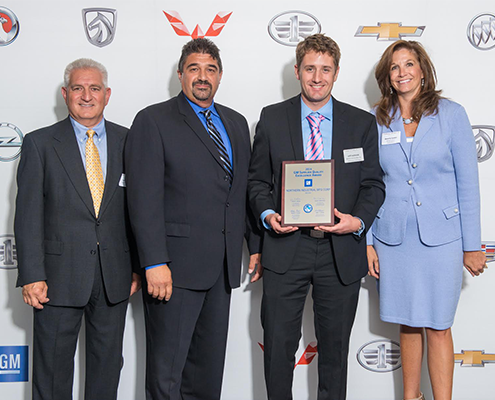Differences Between Ferritic Nitro Carburizing & Carbonitriding
Welcome to Northern Industrial Manufacturing’s “Automotive Parts University”! In these quick-read, online articles we educate clients, customers, and anyone who loves all-things-automotive on the ins-and-outs of automotive parts manufacturing.
In this article the automotive parts manufacturing experts at NIM discuss the differences between Ferritic Nitro Carburizing and Carbonitriding for the hardening of metals used in manufacturing automotive parts.
Ferritic Nitro Carburizing and Carbonitriding both have the same purpose of case hardening parts with chemical change by diffusing nitrogen, carbon, or both onto the surface. But these two processes are not to be confused with each other. In fact, there are several different attributes between both of these processes that should be compared to differentiate between them. There are also several factors to consider when choosing between these two processes for case hardening.
When to Use Ferritic Nitro Carburizing vs. Carbonitriding
Both processes are most commonly used for parts made of steel or steel alloys. However, it’s the conditions of the steel parts that determine which process is to be used. The ferritic nitro carburizing process is used on steels in the ferritic phase, regardless of chemical composition. The carbonitriding process is used on low-alloy, low-carbon steels, regardless of the phase.
As for the steps taken for each process, there are some similarities and differences. As case hardening processes, both ferritic nitro carburizing and carbonitriding uses heat treating to diffuse the nitrogen and carbon into the surface of the part. For ferritic nitro carburizing, the part is heating in a furnace at a relatively low temperature (975-1125 °F) as no phase changes are necessary. As for carbonitriding, the part needs to be heated into the austenitic range (1600 °F) to allow both carbon and nitrogen to be diffused in to part. Carbonitriding also uses ammonia gas injected into the furnace for the part to extract nitrogen from it.
Outcomes of Ferritic Nitro Carburizing vs. Carbonitriding
The outcomes are similar for both processes, the part end up having both nitrogen and carbon in its surface. However, for ferritic nitro carburizing, the process causes the part to gain significantly more nitrogen than carbon, as the carbon cannot enter the surface because of the part’s phase. As for the carbonitriding process, while the part extracts all the nitrogen from the ammonia gas, the part has more carbon diffused in its surface than nitrogen. Carbonitriding also causes the part to have a deeper case layer than ferritic nitro carburizing.
In conclusion, both the ferritic nitro carburizing and carbonitriding are excellent case hardening processes. The process that’ll work best for the part is only determined by the desired results and what resources are manufacturers are willing to use for either process.
Ferritic Nitro Carburizing & Carbonitriding | Michigan
Northern Industrial Manufacturing is your turnkey partner for even the most challenging projects. Our experts understand which options work best for your specific material and surface finish requirements, and offer the most advanced technologies to meet the needs of your unique project.
If you have a project that requires hardening processes, NIM offers both ferritic nitro carburizing and carbonitriding case hardening.
We will bring your parts to market on time – with assistance from prototype to volume production – quickly, affordably and efficiently as possible.
Thank you for visiting our blog where we keep customers updated and informed on the latest processes in automotive parts manufacturing!
Please check back often if you would like to learn more about the world of precision thrust washers, selective shims, spacers, and other automotive parts.




